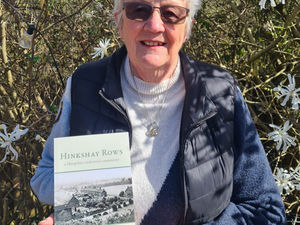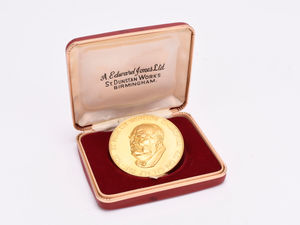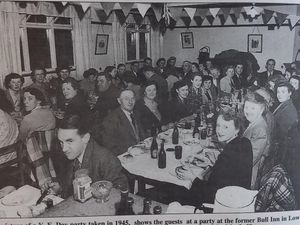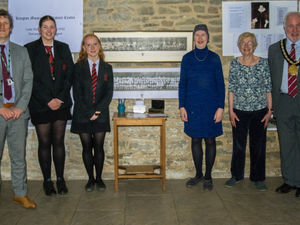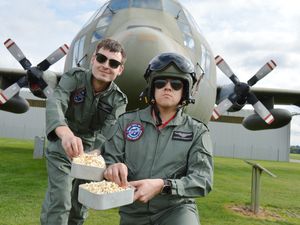Shropshire move sparked research into Welsh heroes
Almost 15 years of painstaking research sparked by a move to Shropshire has reached fruition with the publication of the first of a trilogy looking at the experience of The Welsh At War.
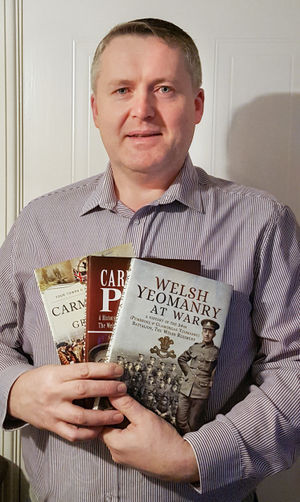
It was after moving to Shrewsbury that Steven John, who was born and brought up in Laugharne in west Wales, became inspired to try to find out more about his ancestors.
"I knew little further back than my grandparents, and nothing at all about my paternal grandfather, as he died before I was born and his upbringing was always a bit of a mystery," said Steve.
He discovered that his great-grandfather, Lance Corporal David Thomas John, of Laugharne, died on the Somme in 1916.
"That ignited all my research ever since," said Steve, who has already written a number of military history books with a Welsh flavour.
His trilogy The Welsh At War is the culmination of his researches on all aspects of the Welsh soldier during the Great War, and includes the stories of all of the Welsh infantry regiments during the conflict.
With Shropshire being a border county, there are many Shropshire links too.
"A large number of Welsh soldiers served with the King's Shropshire Light Infantry - almost a thousand Welshmen were killed with the regiment in World War One."
Conversely, many Salopians served in Welsh regiments.
"A large number of 1st Battalion KSLI soldiers served with 2nd Welsh on the Somme, after being posted to the battalion as a draft of reinforcements."
There were other links too.
"The headquarters of the Welsh Army Corps throughout World War One was at Shrewsbury, in The Riding School. It remained there throughout war, dealing with casualty inquiries, correspondence, medal awards and so on.
"Many Welsh officers were educated at Shrewsbury School, including Philip Gillespie Bainbrigge, a war poet and friend of Wilfred Owen, who was also of Welsh heritage.
"And the 4th Battalion KSLI and the Shropshire Royal Horse Artillery served with the 53rd (Welsh) Division pre and post WW1."
Steve, who is 48, moved to Shrewsbury in July 2003 to work as an engineer at Muller.
"I still work as an engineer with the Process and Services Engineering department at Muller in Market Drayton, and working shifts have plenty of time off to pursue my hobby of World War One military research and the writing has been a result of almost 15 years of this research into Welsh units and troops."
Among those featured in the first volume of The Welsh At War, which covers the period spanning the Mons battles in 1914, and Loos and Gallipoli in 1915, are Private William Cooper Lewis of the Welsh Horse Yeomanry, who married Rhoda Jane Edwards, of Yew Tree Cottage, Leaton Heath, Shrewsbury.
He was one of a party of men digging an underground gallery at Gallipoli on November 20, 1915, when the Turks set off a defensive charge, burying the officer and eight men. The officer managed to dig himself out but Lewis and all the others died.
Another is Charles Edward Tudor-Jones, who was educated at Shrewsbury School, and became an Observer in the Royal Flying Corps and was shot down and killed along with his pilot by the famous German ace Max Immelman, the seventh of his 17 victories before Immelman was himself killed in 1916.
Lieutenant Alfred Clulow Fitzgerald Garnett-Botfield, born at Bishop's Castle, was the son of William Egerton Garnett-Botfield, of Decker Hill, Shifnal, and was serving with the South Wales Borderers when he was killed on May 9, 1915, aged 22.
Captain A. C. Lloyd wrote to his mother after his death: "Your very gallant son fell in action on the 9th (Sunday). His platoon was ordered out to an advanced trench under protection of our artillery fire.
"The order was given to advance from there and though heavy Maxim gun fire was coming from the German lines, he at once and without any hesitation gave the command, 'Prepare to Advance.'
"I was myself hit and just saw him leap out of the trench, only to fall at once instantaneously killed. I have recommended him for his gallant conduct and only hope that an official recognition of his qualities as a soldier will receive due mention..."
Another letter to the family gave precise details of where he was buried on the battlefield. However, his grave was subsequently lost and as a result he is commemorated on the Le Touret Memorial which commemorates over 13,400 British soldiers in that sector who have no known grave.
The Welsh At War is published by Pen & Sword and costs £25.

